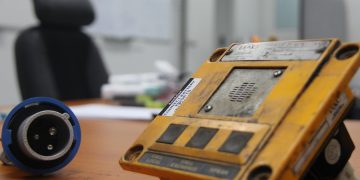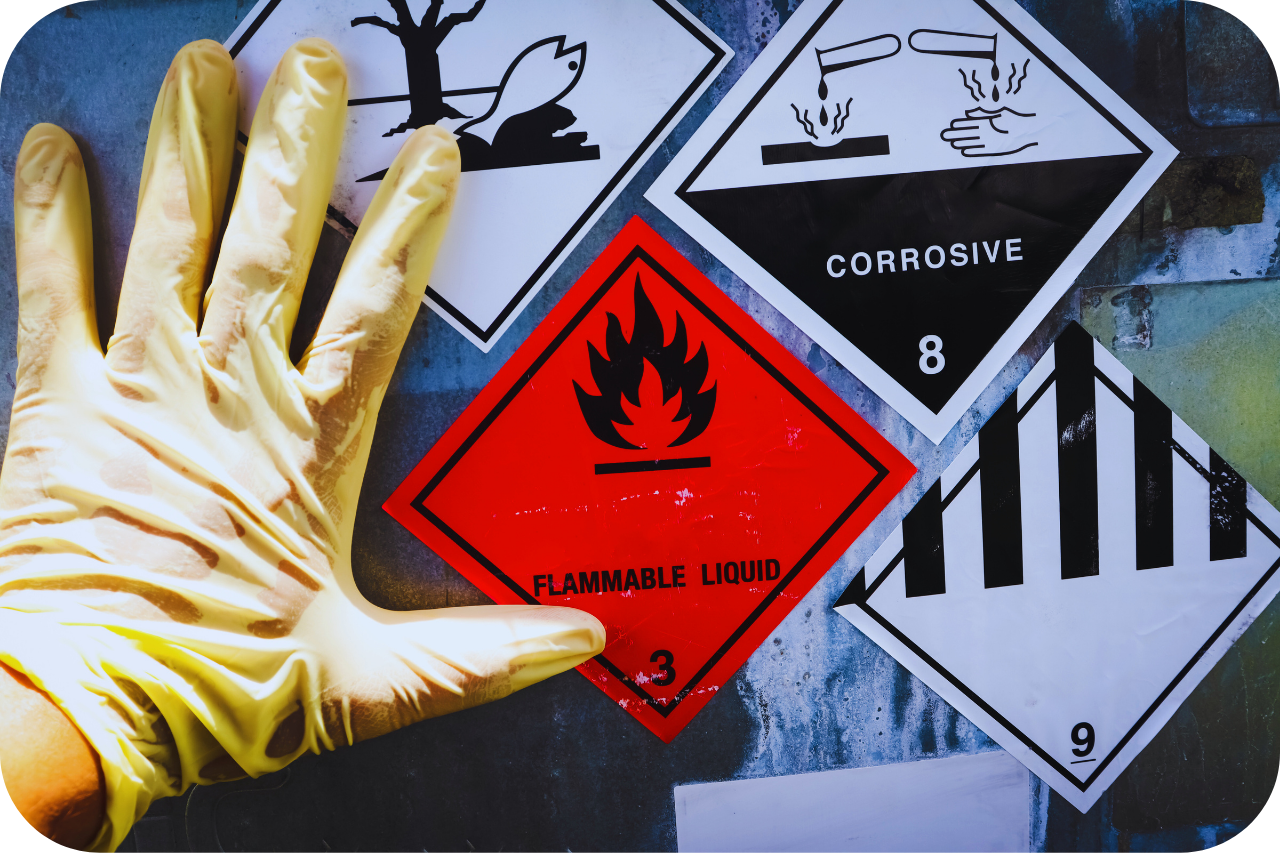Some Known Facts About Roar Solutions.
Some Known Facts About Roar Solutions.
Blog Article
Some Known Questions About Roar Solutions.
Table of Contents10 Easy Facts About Roar Solutions ShownOur Roar Solutions DiariesAn Unbiased View of Roar Solutions
In order to protect installments from a prospective surge a method of analysing and categorizing a potentially hazardous location is needed. The objective of this is to make certain the appropriate option and setup of equipment to eventually prevent a surge and to ensure safety and security of life.
(https://au.pinterest.com/pin/1124703706941720474)
No equipment must be installed where the surface area temperature of the devices is higher than the ignition temperature of the provided risk. Below are some typical dirt hazardous and their minimal ignition temperature level. Coal Dirt 380C 225C Polythene 420C (thaws) Methyl Cellulose 420C 320C Starch 460C 435C Flour 490C 340C Sugar 490C 460C Grain Dust 510C 300C Phenolic Resin 530C > 450C Aluminium 590C > 450C PVC 700C > 450C Soot 810C 570C The likelihood of the hazard being present in a concentration high sufficient to trigger an ignition will vary from location to area.
In order to identify this threat a setup is split into locations of danger relying on the quantity of time the unsafe is existing. These areas are referred to as Areas. For gases and vapours and dirts and fibres there are 3 areas. Zone 0 Zone 20 A hazardous atmosphere is very most likely to be present and might exist for long durations of time (> 1000 hours per year) or perhaps continuously Zone 1 Zone 21 A hazardous environment is feasible but unlikely to be existing for extended periods of time (> 10 450 C [842 F] A classification of T6 suggests the minimal ignition temperature is > 85 C [185 F] Harmful location electrical equipment perhaps made for usage in higher ambient temperature levels. This would certainly suggested on the rating plate e.g. EExe II C T3 Ta + 60C( This implies at 60C ambient T3 will certainly not be surpassed) T1 T1, T2, T3, T4, T5, T6 T2 T2, T3, T4, T5, T6 T3 T3, T4, T5, T6 T4 T4, T5, T6 T5 T5, T6 T6 T6 A T Course rating of T1 suggests the optimum surface temperature level produced by the instrument at 40 C is 450 C. Presuming the linked T Class and Temperature level rating for the devices are ideal for the location, you can always utilize a tool with an extra stringent Department ranking than required for the location. There isn't a clear answer to this concern sadly. It truly does depend upon the sort of devices and what fixings require to be performed. Devices with particular examination treatments that can not be carried out in the field in order to achieve/maintain 3rd party score. Should come back to the manufacturing facility if it is before the equipment's service. Field Repair Work By Authorised Employee: Complicated testing might not be called for nevertheless certain treatments may need to be adhered to in order for the tools to keep its 3rd party score. Authorized personnel should be employed to perform the work appropriately Repair service need to be a like for like replacement. New component need to be taken into consideration as a direct substitute requiring no special testing of the devices after the repair service is full. Each tool with an unsafe rating need to be examined independently. These are outlined at a high level listed below, however for more comprehensive details, please refer straight to the standards.
What Does Roar Solutions Do?
The tools register is a comprehensive data source of tools documents that consists of a minimum collection of areas to recognize each product's area, technological parameters, Ex classification, age, and ecological information. This information is critical for monitoring and handling the equipment efficiently within dangerous locations. On the other hand, for regular or RBI sampling examinations, the quality will certainly be a mix of In-depth and Close examinations. The ratio of Detailed to Shut assessments will be identified by the Equipment Risk, which is analyzed based on ignition threat (the chance of a resource of ignition versus the likelihood of a flammable environment )and the hazardous location classification
( Zone 0, 1, or 2). This variant will certainly likewise influence the resourcing requirements for job preparation. Once Great deals are defined, you can develop sampling plans based on the sample dimension of each Lot, which refers to the variety of random equipment things to be inspected. To determine the called for sample dimension, 2 facets require to be reviewed: the dimension of the Whole lot and the category of evaluation, which shows the level of initiative that ought to be used( reduced, regular, or boosted )to the assessment of the Lot. By integrating the classification of assessment with the Great deal size, you can then develop the appropriate denial requirements for a sample, implying the permitted variety of damaged products discovered within that sample. For more information on this procedure, please refer to the Energy Institute Guidelines. The IEC 60079 common recommends that the maximum interval in between assessments must not go beyond three years. EEHA assessments will certainly likewise be carried out beyond RBI projects as part of arranged upkeep and equipment overhauls or repair work. These assessments can be credited toward the RBI example sizes within the influenced Whole lots. EEHA evaluations are performed to determine faults in electrical devices. A heavy scoring system is essential, as a single tool may have multiple mistakes, each with varying levels of ignition danger. If the combined score of both examinations is less than twice the fault rating, the Whole lot is considered appropriate. If the Great deal is still taken into consideration inappropriate, it must undertake a full assessment or validation, which may activate more stringent inspection procedures. Accepted Great deal: The reasons of any type of mistakes are recognized. If a typical failing setting is found, added tools may need inspection and repair service. Mistakes are categorized by seriousness( Security, Honesty, Home cleaning ), making sure that immediate issues are assessed and addressed promptly to mitigate any kind of influence on safety and security or procedures. The EEHA database ought to track and tape the lifecycle of mistakes along with the rehabilitative actions check my reference taken. Applying a durable Risk-Based Inspection( RBI )approach is critical for making sure conformity and security in managing Electric Equipment in Hazardous Locations( EEHA) (eeha courses). Automated Fault Scoring and Lifecycle Administration: Effortlessly take care of faults and track their lifecycle to boost examination accuracy. The intro of this support for risk-based inspection additionally reinforces Inspectivity's setting as a best-in-class remedy for regulative compliance, along with for any type of asset-centric examination use case. If you are interested in learning extra, we invite you to request a demo and uncover just how our service can change your EEHA administration processes.
4 Easy Facts About Roar Solutions Described

In terms of eruptive danger, a dangerous location is an atmosphere in which an explosive ambience is existing (or may be anticipated to be present) in amounts that need special preventative measures for the building, installation and use equipment. high voltage courses. In this post we explore the obstacles dealt with in the office, the danger control steps, and the needed expertises to work securely
It is a repercussion of modern-day life that we manufacture, save or deal with a variety of gases or liquids that are considered combustible, and a series of dirts that are deemed combustible. These materials can, in certain conditions, create explosive environments and these can have significant and tragic effects. Most of us know with the fire triangular remove any type of among the 3 elements and the fire can not happen, yet what does this mean in the context of dangerous locations? When damaging this down right into its simplest terms it is essentially: a mix of a particular quantity of release or leak of a specific material or product, blending with ambient oxygen, and the presence of a source of ignition.
In a lot of circumstances, we can do little concerning the levels of oxygen in the air, but we can have significant influence on sources of ignition, for instance electrical devices. Dangerous locations are documented on the harmful area category drawing and are identified on-site by the triangular "EX LOVER" indication. Right here, among other key info, areas are split into three types depending upon the danger, the chance and duration that an explosive environment will exist; Zone 0 or 20 is regarded one of the most hazardous and Area 2 or 22 is regarded the least.
Report this page